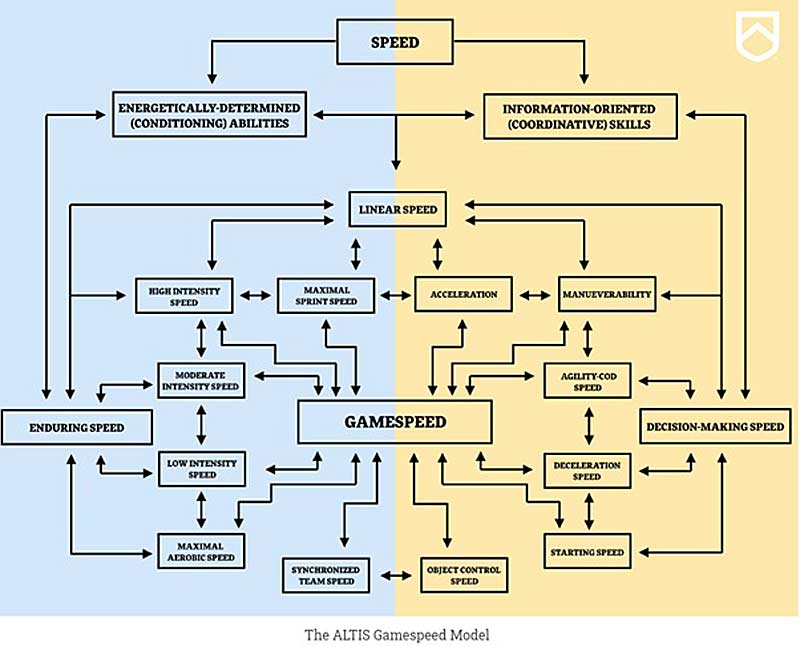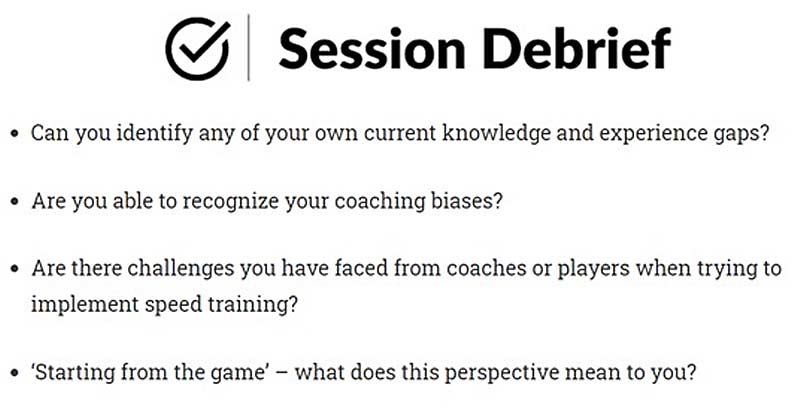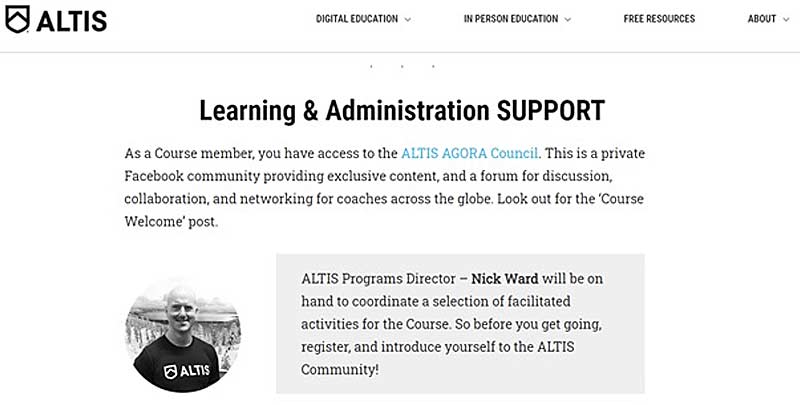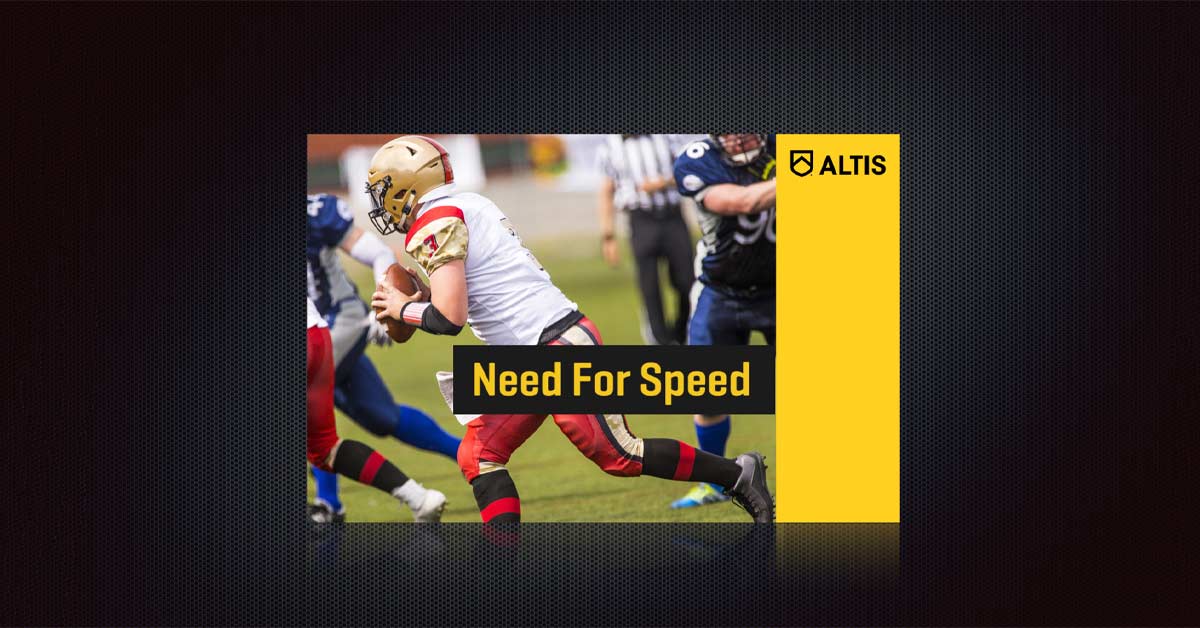What is the quality every coach asks for and every team is wary of? “Speed kills.” We’ve all heard the pithy statement, but I’d never heard it put as succinctly as this before:
“Speed is an apex measurement for athleticism.”
I like the imagery that this analogy produces, as apex predators include lions, tigers, great white sharks, and birds of prey. Imagine a golden eagle swooping down upon its prey to strike. It is the apex predators of the sporting arena, with lightning speed, that get fans out of their seat in excitement. The striker in football (soccer), the winger in rugby union or league, the wide receiver in American football—these are the apex predators of the sports field.
An attacking player with lightning speed terrifies the opposing defense. Similarly, a defensive player who is fleet of foot can nullify the opposition’s attack. Even if they have the trickery to wrong foot you once, your recovery speed can allow you to get back for a second bite at the tackle. This is why so many of us are interested in developing speed in athletes.
[adsanity align=’aligncenter’ id=9192]
In the opening addresses of their Need for Speed course, Stuart McMillan and the staff at ALTIS openly caution, as is the case with their earlier courses, that it is not simply about rote learning a plug-and-play system that you can insert into your program. This is a challenging and highly involved learning experience. It will require you to think deeply about what you read, watch, and learn, considering how the information and ideas translate into your specific context. ALTIS encourages you to not only review and learn from the materials they provide but contemplate how you can blend them into your existing practice.
While the ALTIS Need for Speed course is a comprehensive resource, the course in essence aims to answer three fundamental questions:
- What is speed?
- Why is it important?
- How do we develop it?
This succinct series of specific questions helps guide the overall direction of this course, because—as progression through the course reveals—this is a highly complex and multifaceted topic. For example, even the first and most basic question, “what is speed?” is not so easy to answer. As ALTIS highlights early in their modules, speed means slightly different things to each of us working in different realms of sport. While the core ideas and principles remain the same, there are contextual differences.
As ALTIS highlights early in their modules for ‘Need for Speed,’ speed means slightly different things to each of us working in different realms of sport. Share on XSpeed of movement, speed of thought, speed of the object, speed of the counterattack—the transition from defense to attack. An excellent recent example of this speed of transition comes from Crystal Palace in the Premier League, an unfancied side who typically finish in the bottom half of the league—closer to relegation than fighting for the title. When they play the bigger names of English football, despite ceding the lion’s share of possession, they have shown an almost unbelievable knack for leaving their opponent’s home stadium with a victory. Soaking up pressure and hitting with devastating counterattacks, they highlight how speed of attack, in transitioning from defense to attack in the blink of an eye, can allow supposedly inferior teams to snatch victory from their more expensively assembled counterparts. September’s 1-3 win at Old Trafford versus Manchester United was their eighth away win against an established “top six” side since August 2015.
Speed is not then merely about running fast in a straight line. Nor, in fact, is it merely a physical ability. We can probably all immediately bring to mind examples of outstanding players from our team sport of choice who would not win any medals in a 40-yard dash but whose ability to quickly read and analyze the play means they are rarely exposed for a lack of pace.
Common protestations of team sports coaches and staff regarding why the integration of track-and-field-style philosophies and training methods would not translate to the team sport environment include the constraints of the ball or other implements, opposition defenders, the need to scan the field of play, and more. Yet, in Need for Speed, ALTIS demonstrates that they understand the nuance of manipulating pure sprinting to the team sport context. While they introduce the “rules” of faster straight-line speed, they also draw together an enviable cast of experts to translate these principles to the field.
ALTIS leverages not just their own impressive knowledge and experience of developing speed (experience derived from producing more than 100 Olympians and 60 medals) and team sports athletes (many decades of experience across many different sports), but they also lean upon their network of industry experts with whom they have developed mutually beneficial relationships. This includes Nick Winkelman (Irish rugby, author of Language of Coaching), Ian Jeffreys (author of Game Speed and Soccer Speed), Fergus Connolly, and more, who collectively bring an unparalleled breadth and depth of knowledge and experience of developing speed across a vast range of sports.
This course has also introduced me to some new high-level practitioners, such as Steffan Jones, a cricket fast bowling performance specialist working in the Indian Premier League with the Rajastan Royals, owner of PaceLab Ltd, and co-owner of Cricket Strength.
Need for Speed provides something for everyone, with industry-leading experts from American football, “soccer,” various rugby codes, and cricket, and eminent researchers of sprinting biomechanics. There are contributions from expert and experienced coaches, elite athletes, academics, and pracademics. The depth and breadth of knowledge brought to bear in this course (from a multitude of sports, backgrounds, experiences, lenses, and philosophies) is unparalleled. However, the course coordinators are not arrogant enough to think they have all the answers or that they have the answers to every unique situation. You have your own experiences, perspectives, and challenges that may result in different or additional answers to the problems examined.
One of the problems in discussing how to develop speed is the different perspective, background, and terminology that different people bring to the conversation. Share on XOne of the problems in discussing how to develop speed is the different perspective, background, and terminology that different people bring to the conversation. This course tries to resolve all the different training terminology already out there, with many different terms used to describe the same thing by different coaches and sports, or the same term used to describe different constructs. With the Need for Speed course and the Gamespeed model, ALTIS aim to create a common language that may facilitate more effective conversations.
“Speed,” as it relates to the realm of team sports, is not merely about the physical act of running faster in a straight line than your opponent. As ALTIS asserts, speed is “a highly complex ability with numerous influencing factors.” “Gamespeed” requires the development and complementary interaction of a number of diverse physical and cognitive qualities. Enroll in the course to study the components of this model in greater detail.

The course is structured with terminology the ALTIS coaches use to organize their athlete’s training and the progression of their career. Each book, much like each training session, is bookended by a session brief and session debrief to facilitate enhanced learning.

Intense blocks of learning within the course are termed training camps. The first of these is a real in-depth examination of the principles and biomechanics underpinning elite sprinting. Ken Clark delivers a series of 11 mini-lectures on acceleration and max velocity sprinting. For those familiar with contemporary research on these topics, it is a real strength of the course to have Ken deliver this material personally. A second training camp is hosted by Shawn Myszka. If Ken is the guy who helps you understand the rules of sprinting, Shawn is perhaps the guy who helps you understand how to adapt them to the chaotic world of team sports.
Coaches considering enrolling in this course should understand the commitment they are making. This is not an easy box-ticking class that you sign up for, read a few articles or watch a few presentations, and collect the CEUs to maintain a coaching accreditation. (ALTIS does advertise that it encompasses “45 hours of guided learning.”) This course requires real thought and input from the student, and you shouldn’t undertake it lightly. There are active elements to the course—you are not merely attending to receive information and wisdom imparted by speed gurus.
This course challenges you to build out your own ideas and understanding of speed for your team, athletes, and environment—it’s not as simple as adopting someone else’s philosophy. Share on XThe course challenges you throughout to build out your own ideas and understanding of speed for your team, your athletes, and your environment—it is not as simple as adopting someone else’s philosophy and ideas. Most modules finish with a practical or mental task of some kind: answering questions, creating PowerPoints on your own personal philosophies on speed, questioning how the information contained in the latest module changed or meshed with your existing philosophies, and sometimes providing practical coaching tasks to experiment with in your next session. Each of the three books is quite substantial. There is a lot of information to absorb, and the review sections at the end of each chapter, along with the quizzes, help to reinforce what you have learned.
Because of the comprehensive, all-encompassing nature of the course—tackling the biomechanics of elite sprinters and team sports players, motor-learning theory, cognitive-perceptual aspects of speed, physiology, and more—there is a ton of reading involved. However, the course delivers a nice blend of graphics, charts, and images, listening to and watching videos, and practical and theoretical tasks to break up the writing and help keep you engaged. Before embarking on each new module, an estimate of the anticipated time investment required is provided, allowing you to study at your own pace and fit the work into your schedule.
ALTIS has explained the course is a living document; they will update it as new ideas and information emerge. Examples of this have been demonstrated even in the first month it has been live, with Stu McMillan adding new and updated content already. Furthermore, their programs director, Nick Ward, provides ongoing support throughout your studying via their Facebook pages. So, the value of the course continues to grow beyond the initial investment.

A Comprehensive Educational Resource
The ALTIS Need for Speed course is a comprehensive and intensive learning resource on all things speed in team sport. ALTIS introduces what speed means to them, what the rules are for devastating straight-line running speed, and how you adapt these concepts to the field or court for the team sport athlete.
Any prospective student needs to enter into this course with their eyes open, as it will be a major commitment. But the workload is broken down into manageable bite-size chunks of between 20 and 40 minutes, in most cases, so you can tackle the course at your own pace and based on how it fits into your schedule.
[adsanity align=’aligncenter’ id=9054]
There is something for everyone, whether you prefer to learn by reading, listening, watching, or writing. The information is presented across a wide range of mediums from an extraordinarily diverse range of practitioners from different cultures, environments, and perspectives.
It would be difficult to summarize the entirety of such a comprehensive educational resource in just one blog post—I have rambled on too much already. If you are keen to read and learn more, enroll in the Need for Speed course.





